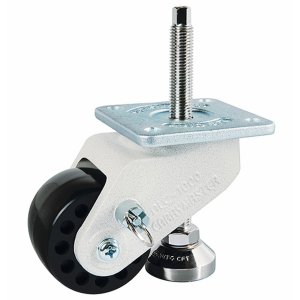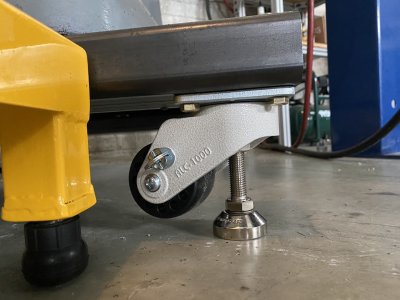-
Scam Alert. Members are reminded to NOT send money to buy anything. Don't buy things remote and have it shipped - go get it yourself, pay in person, and take your equipment with you. Scammers have burned people on this forum. Urgency, secrecy, excuses, selling for friend, newish members, FUD, are RED FLAGS. A video conference call is not adequate assurance. Face to face interactions are required. Please report suspicions to the forum admins. Stay Safe - anyone can get scammed.
-
Several Regions have held meetups already, but others are being planned or are evaluating the interest. The Calgary Area Meetup is set for Saturday July 12th at 10am. The signup thread is here! Arbutus has also explored interest in a Fraser Valley meetup but it seems members either missed his thread or had other plans. Let him know if you are interested in a meetup later in the year by posting here! Slowpoke is trying to pull together an Ottawa area meetup later this summer. No date has been selected yet, so let him know if you are interested here! We are not aware of any other meetups being planned this year. If you are interested in doing something in your area, let everyone know and make it happen! Meetups are a great way to make new machining friends and get hands on help in your area. Don’t be shy, sign up and come, or plan your own meetup!
You are using an out of date browser. It may not display this or other websites correctly.
You should upgrade or use an alternative browser.
You should upgrade or use an alternative browser.
DIY Riser Block for 6" x 26" Import Mills (Grizzly, Enco, Harbor Freight, etc.)
- Thread starter Tmate
- Start date
Tmate
Well-Known Member
Yes that is the postand welding would play a decent part in making the base…
Sadly, I have stick, wire, and gas welding here. But I can't seem to make a decent weld no matter how hard I try. I wish I had learned when I was younger, when I could see well, and when I didn't shake so badly. Maybe it would have made a difference...... Or maybe not.....
The use of leveling feet with integral casters eliminates any welding whatsoever. They aren't cheap, but are an easy and fairly nice looking solution.
Carrymaster
ALC-1000FB
$58.00 each
Load Capacity:
2,205 lbs/ea | 4,409 lbs w/4
Accessory:
Bolts & nuts included
I like them! Especially the weight rating! Good value for the price too.
But they increase the height of the mill. That's what the approach that @Brent H used avoids.
I wonder if they make such a thing that can be mounted to the sides of the mill base?
I suppose I could make an L-Bracket or drill and tap some holes.......
The only disadvantage that I can think of to 7" additional height is reaching the draw bar. ......
Also nice to be able to use the shop vac underneath.
Holy crap. Necessity is the mother of invention! I can't imagine having to use something like that to tighten a draw bar! I'll never complain about being asked to change light bulbs again!
But ya, being able to vacuum under my machines would be a plus.
Tmate
Well-Known Member
Holy crap. Necessity is the mother of invention! I can't imagine having to use something like that to tighten a draw bar! I'll never complain about being asked to change light bulbs again!
But ya, being able to vacuum under my machines would be a plus.
Actually, it works great. The trigger of the Milwaukee unit shown rests against the head of the mill. This allows you hold it near the bottom and give it a slight nudge to operate the trigger. Releases collets just as easily. A power drawbar would be better, but difficult to install on a step pulley Bridgeport.
Attachments
The use of leveling feet with integral casters eliminates any welding whatsoever. They aren't cheap, but are an easy and fairly nice looking solution.
Carrymaster
ALC-1000FB
$58.00 each
Load Capacity:
2,205 lbs/ea | 4,409 lbs w/4
Accessory:
Bolts & nuts included
View attachment 15651 View attachment 15652
Ah nice. I have really limited space in my sloped garage so being able to easily move the mill to the corner while not in use and leveling is worth the investment for me. How do you think those rigid feet would handle a sloped floor? Where did you source them from? McMaster Carr sells a pivoted feet version but they are 2x the price and 1/4 of the load capacity:
Also, what size and thickness is your HSS?
Last edited:
Tmate
Well-Known Member
Tubing is 2 1/2" x 5" x 3/16" wall. I wouldn't think the slope would be a problem if not too steep. Most have a bit of a slope toward the door. Maybe put a piece of thick rubber pad under each foot.
At 2,000 lbs+ mine isn't easily moved by one person. I used a long pry bar to move it into place. Also, with a big slope it can get away from you. I don't think it's practical to move and level it every time you want to use it. Maybe so if you want to get it out of the way for a month or two periodically.
At 2,000 lbs+ mine isn't easily moved by one person. I used a long pry bar to move it into place. Also, with a big slope it can get away from you. I don't think it's practical to move and level it every time you want to use it. Maybe so if you want to get it out of the way for a month or two periodically.
Tubing is 2 1/2" x 5" x 3/16" wall. I wouldn't think the slope would be a problem if not too steep. Most have a bit of a slope toward the door. Maybe put a piece of thick rubber pad under each foot.
At 2,000 lbs+ mine isn't easily moved by one person. I used a long pry bar to move it into place. Also, with a big slope it can get away from you. I don't think it's practical to move and level it every time you want to use it. Maybe so if you want to get it out of the way for a month or two periodically.
Where did you purchase the casters? I can only find them online at this small company here that I'm cautious to purchase from. https://www.zambus.com/products/alc-1000fb.html
Where did you purchase the casters? I can only find them online at this small company here that I'm cautious to purchase from. https://www.zambus.com/products/alc-1000fb.html
I checked them out. I would not be afraid of ordering from them. They carry a wide variety of nice casters with various capacities.
I am quite tall, but I don't really want my mill to get too high off the ground. That's what I like about @Brent H s design. But I can't weld very well so that isn't happening. I plan to spend some time after I've decided what mill to keep to design something that bolts to the side of the mill base such that the mill is only raised an inch or two.
The other advantage of mounting the wheels at the side is that you can use a bigger wheel which should roll easier. I built a dolly for my 3pt hitch backhoe and I can move that myself with a little effort. With bigger wheels, the mill should be just as easy to move.
Sounds like a great project for both of us after we get our mills running.




